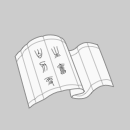
固态器件:Ⅱ:英文::传感材料与传感技术丛书
¥ 21.12 2.4折 ¥ 88 全新
库存133件
北京房山
认证卖家担保交易快速发货售后保障
作者Ghenadii Korotcenkov主编
出版社哈尔滨工业大学出版社
ISBN9787560341552
出版时间2012-03
装帧平装
开本其他
定价88元
货号8120494
上书时间2024-12-10
- 在售商品 暂无
- 平均发货时间 8小时
- 好评率 暂无
- 最新上架
商品详情
- 品相描述:全新
- 商品描述
-
作者简介
科瑞特森科韦(Korotcenkov,G.), received his Ph.D. in Physics and Technology of Semiconductor Materials and Devices in 1976 and his Habilitate Degree (Dr. Sci.) in Physics and Mathematics of Semiconductors and Dielectrics in 1990. He was for many years the leader in the Gas Sensor Group at the Technical University of Moldova. He is currently a research professor at: Gwangju Institute of Science and Technology, in Gwangju, Republic of Korea. Dr. Korotcenkov is the author of five previous books and has authored over 180 peerreviewed papers. His research has received numerous awards and honors, including the Award of the Supreme Council of Science and Advanced Technology of the Republic of Moldova.
目录
6 运用热释电和热电效应的气体传感器
1 传感器工作的基本原理
2 热能转换材料
3 制造与封装
4 参数
5 传感器参数的优化方法
6 应用领域与传感器市场
7 总结
参考文献
7 量热式传感器
1 引言
2 量热式传感器的基本原理
3 催化燃烧设备
4 薄膜与MEMS设备
5 材料
6 毒化
7 信号分析与运行模式
8 封装
9 应用
10 结论
参考文献
8 基于微悬臂梁的化学传感器
1 引言
2 微悬臂梁及其运行模式
3 微悬臂偏转检测方法
4 谐振工作模式
5 微悬臂梁的弯曲行为
6 励磁技术
7 微悬臂梁的制备
8 表面功能化
9 微悬臂梁式传感器
10 悬臂梁式化学传感器的应用
11 生物传感器的应用
12 超敏感纳米悬臂梁
13 基于微机械悬臂梁阵列的电子鼻
14 商业地位
15 展望与未来趋势
参考文献
9 石英晶体微天平
1 引言
2 压电材料
3 石英晶体微天平(QCM)的操作基础
4 QCM反应的理论分析
5 QCM传感器的应用
6 展望
7 石英晶体与石英晶体微平衡公司
8 术语
9 致谢
10 推荐延伸阅读
参考文献
10 声表面波传感器的化学应用
11 集成化学传感器
内容摘要
Chemical sensors are integral to the autmnation of a myriad industrial processes, as well as everyday monitoring of such actwities as public safety, testing and monitoring, medical thcrapeutics, and many more.
The Chemical Sensors references booLs wiil span 6 volumes and cover in-depth details on both materials used for chemical sensors anci their applicarions, with volumes 1 through 3 exploring the materials used for chemical sensors - their properties, their behavior, their composition, and even their manuf'acturing and fabrication. Volumes 4 through 6 will explore the great variety of applications for chemical sensors - from manufacturing and industry to biomedical uses.
精彩内容
Chemical sensors are integral to the autmnation of a myriad industrial processes, as well as everyday monitoring of such actwities as public safety, testing and monitoring, medical thcrapeutics, and many more.
The Chemical Sensors references booLs wiil span 6 volumes and cover in-depth details on both materials used for chemical sensors anci their applicarions, with volumes 1 through 3 exploring the materials used for chemical sensors - their properties, their behavior, their composition, and even their manuf'acturing and fabrication. Volumes 4 through 6 will explore the great variety of applications for chemical sensors - from manufacturing and industry to biomedical uses.
— 没有更多了 —












以下为对购买帮助不大的评价